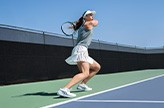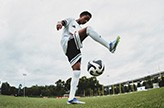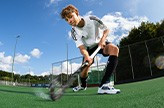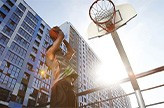Why braces are essential in korfball
Braces play a key role in injury prevention during korfball. The sport demands quick direction changes, abrupt stops, and powerful jumping. These are all actions that put a lot of strain on your ankles. Especially with repeated impact on hard surfaces or during matches when fatigue sets in, the risk of sprains increases. Wearing a proper brace reduces this risk and actively protects your joints throughout every training session and game.
Medical experts recommend the use of ankle braces during intense activity or recovery. Even elite-level players wear braces as standard practice. This makes one thing clear: braces are widely used at the highest levels to prevent injuries and support performance.
Different types of braces for korfball players
Not all braces are the same. There are clear differences in design, fit, and when they are used. Some models are compact and specially designed for use in sports shoes, with a slim profile that keeps them comfortable without restricting your range of motion. Other models are meant for off-court use, for example during recovery or for extra support after an injury.
Your choice of price range depends heavily on how often you play, how much support you need, and how long you want the brace to last. On average, high-quality braces last about one season with intensive use. Cheaper models tend to wear out more quickly, while premium options like those from Push Sports are designed for top-level performance and comfort.
The benefits of high-quality braces
A good brace does more than just stabilize your ankle. By providing support in the right areas, it helps reduce stress on the cartilage. This is essential for preventing long-term damage. Especially during rotational movements and landings, a brace acts as an extra buffer between your joint and the ground.
High-quality braces are designed to offer support without restricting your movement. They follow the natural contours of your ankle and stay firmly in place, even during fast-paced actions. This not only enhances comfort but also boosts your confidence during movement, helping you play more fluidly and freely.
Tips for use and maintenance
A brace only works properly if you wear it correctly. Make sure it fits your ankle snugly without pinching or sliding. It should be tight in your shoe but still comfortable, offering support without being restrictive. You may find it helpful to loosen your shoelaces slightly to make space for the brace.
Braces wear down over time, especially with frequent use. On average, a brace lasts one season if you train and play multiple times a week. To extend its lifespan, we recommend letting your brace air-dry at room temperature after each use, and cleaning it regularly according to the manufacturer’s instructions. This keeps the brace in shape and maintains its effectiveness.
Passion for Sports
Worldwide delivery
Call us:+31 416 293012







